reco
Make informed waste segregation decisions with a wearable
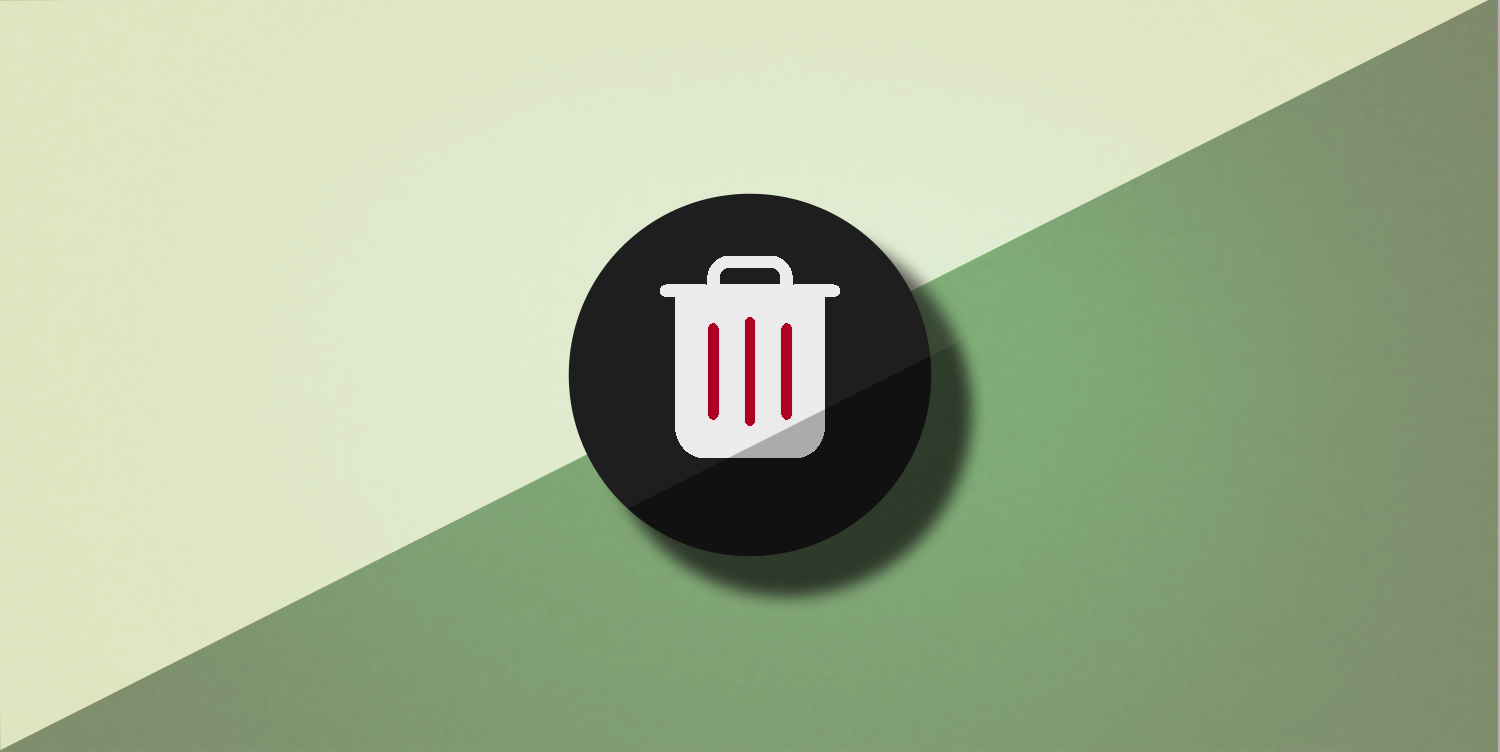
Introduction
Today, more than ever, it’s apparent that sustaining the environment is a very real challenge humankind faces. An issue like the environment is generally considered a macro responsibility that a larger body needs to deal with. However, policy makers struggle to enforce new strategies that will be effective and easy to comply for individuals - who actually aggregate into the community that affects the environment.
Amongst the many adversities of environmental sustainability, we decided to tackle waste segregation in the context of a university campus like that of Georgia Tech. Ultimately we conceived a wearable app that can nudge users right on time to take better decisions about throwing their waste.
My Role
This tool is the end-product of our foundation course in Human-Computer Interaction. Throughout the lifetime of this project my teammates and I shuffled through many different roles. Each of us actively participated at every stage of the project. The listing below only represents roles which I personally consider to be my greatest contributions.
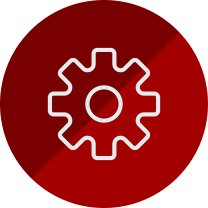

The Problem
Status Quo
After an observational survey of the campus as well as researching the campus resources we learnt that waste segregation on the Georgia Tech campus is encouraged in two ways:
1 bin for landfill + 1 bin for all recyclable materials
Location: Dormitories
Advantage: Lower cognitive load motivates good recycling practice
Disadvantage: Recycling quality is worse as recyclable materials can contaminate each other
1 bin each for landfill, aluminum, plastic, paper
Location: Student centers, Sports Complex, Library etc
Advantage: Homogeneity of materials leads to improved recycling quality
Disadvantage: Greater Cognitive load
Understandably, source separated recycling units are more abundant on campus as these tend to yield recycled products more efficiently (e.g. pellets that are produced from recycling plastic.)
In a utopian world, there would be no problem. However, we learnt from the Office of Facilities Management that they had performed a waste audit during the past summer and all wasn’t as it seemed. The bin for a particular type of material, had a significant proportion of other materials.
This meant that the separated bins were getting contaminated by types of trash not meant to be thrown together, such as non-plastics being thrown in the plastic bin.
Observations
In order to understand why students on campus were failing to dispose trash in the correct bins we performed 5 controlled observations. In these, we asked each participant to perform a simple waste segregation task. Everyday items that can be found on campus were provided to them and they had to think-aloud as they decided where to dispose a given item. We also enquired the confidence of their action, on a scale of 1-5, (1 being least confident and 5 being most) after each item they sorted.
2 American + 3 International
2 Indoor + 1 Outdoor
These choices were made intentionally in order to maximize the possible scenarios where students could find themselves in.
Evidently enough, people were under-perfoming when it comes to accurately disposing waste. This did line up with what the waste audit suggested in the first place. But what were the reasons for people not being able to sort waste correctly. We learnt this by analysing our notes from the think-aloud. This is discussed further in the next section.
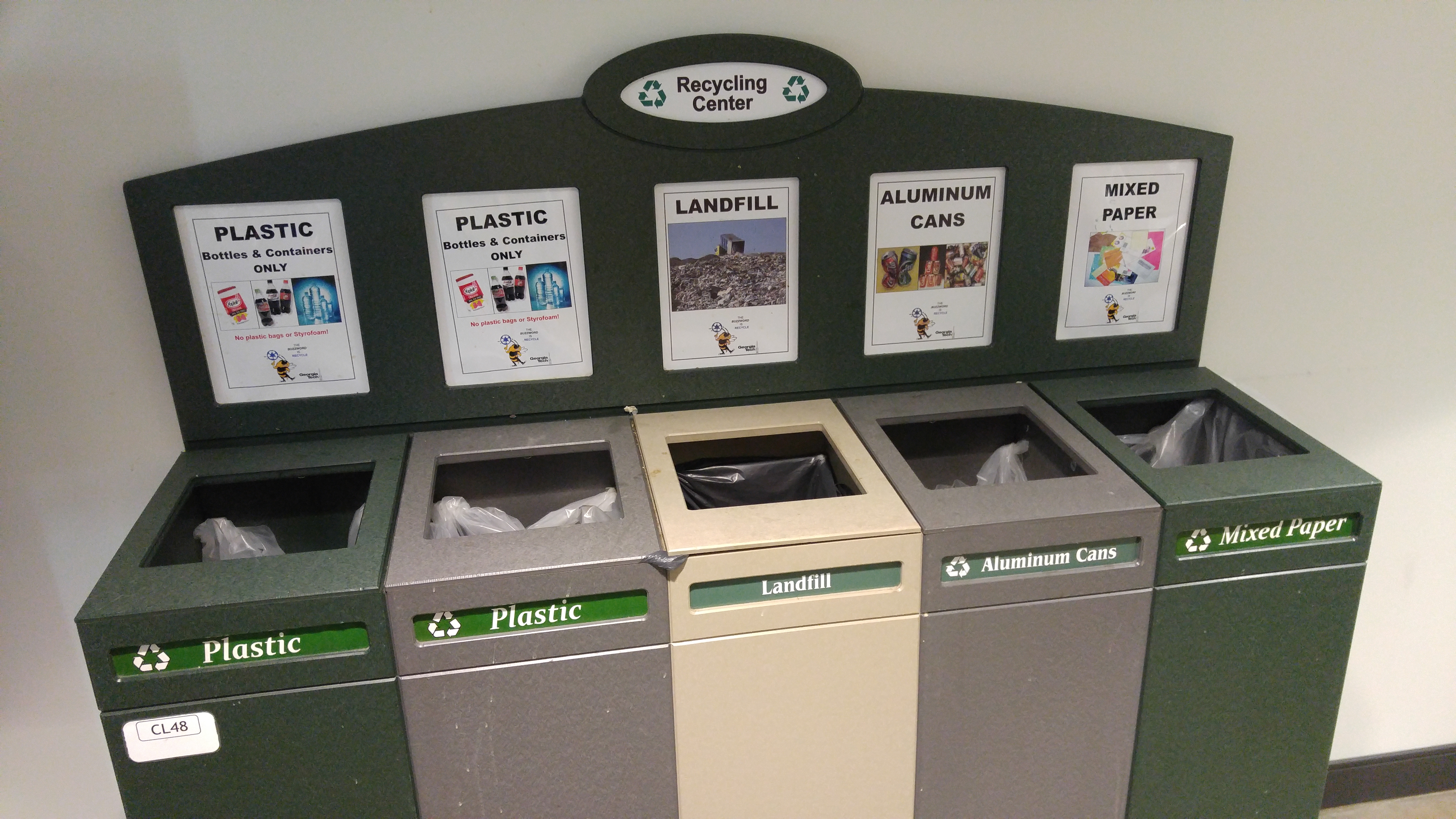 Indoor
Indoor
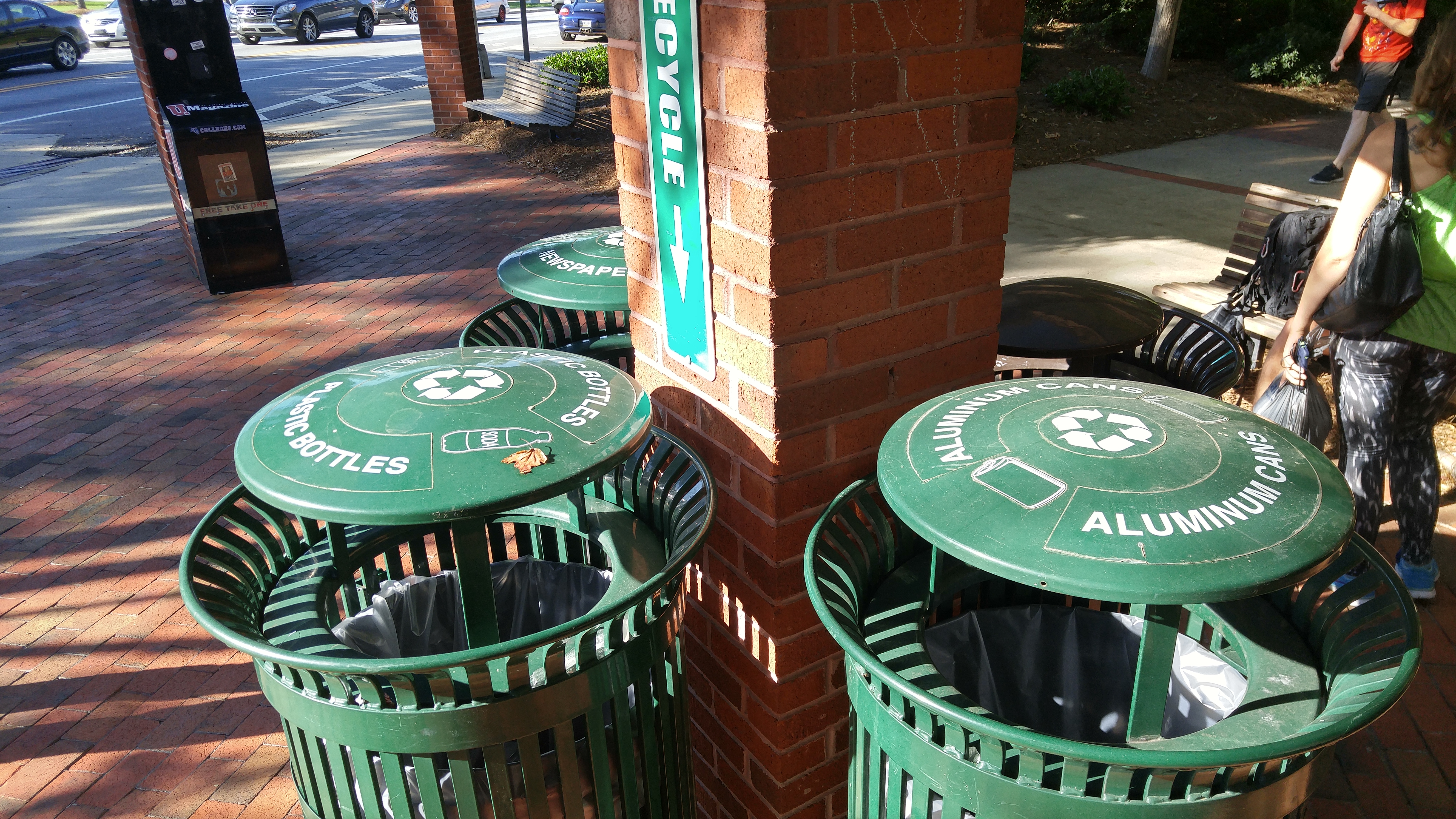 Outdoor
Outdoor
Challenges
After we transcribed all our notes, we performed affinity mapping to learn the general themes associated with waste segregation.
 Affinity Mapping
Affinity Mapping
 Task Analysis
Task Analysis
That lead us to understanding the strategies used by individuals to sort the waste. Even though this is generally a split second decision in real life, participants of our study communicated their rationale rather well. Learning this also helped us draw out the challenges that leads to the indecision or downright fallacious notions they've developed regarding the disposal of certain items.
Apart from these challenges other aspects like past experiences (for e.g. some international students mentioned not having the practice of recycling back home) as well as social context (for e.g. following what the person accompanying them does or referring to items already thrown in the bin)
The Design
User
Before designing our solution we wanted to concretize who really our user is. To simple put our users can be described as:
- Students
- ...studying in the Georgia Tech Atlanta Campus
- ...disposing trash in source separated bins
Our typical user also needed to be characterized, so we personify them as follows:
Divergence
To continue with our design process we consciously decided to consider infrastructural inconsistencies or inadequacies (such as the structural design of bins) as a constraint we have to work around.
Thus we wanted a solution that is robust as well as easy to implement and scale - this helped us filter out ideas like static redesigns of the graphics or the structures of the bins.

In order to structure our brainstorming solutions we agreed to look for ideas within the realm of Behavioural Technology. The reason for this was to mitigate the challenges faced by the user by persuading them to take better decisions in regarding daily waste segregation.
Thus there were 3 main verticals within which we explored possibilities:
Thus through the course of our brainstorming we arrived at multiple ideas. Each of these not only involved multiple different technological approaches but also dealt with different time frames of interventions of the waste-segregation activity cycle.
While we did come up with a variety of ideas, many of these overlapped with each other in certain atomic aspects. Another point of note at this stage was that not every idea was solving the same problem - not exactly anyway.
Convergence
From our literature review of other solutions in the same space as us, we stumbled across mentions of the Trans-theoretical Model. This explains human behaviour in 5 chronological phases. We used these different stages to arrange our ideas.
- Precontemplation: Subconsciousness E.g. Lockscreen utility that slowly trains you about segregation practices by screen unlock quizzes
- Contemplation: Consciousness E.g. AR based educational game that teaches you about how to segregate correctly by competitive gamification
- Preparation: Pre-Action E.g. Holographic demonstrations showing which items are permissible within a particular bin
- Action: Action E.g. Haptic feedbacks that alerts user where to throw the trash right before they toss an item
- they
Sorting our ideas along these lines helped us understand which ideas were similar or had a similar method of approach. Due to this we were able to merge aspects of certain ideas more easily. Moreover we were able to competitively eliminate ideas that operate within the stage.
Thus we were able to arrive at 4 distinct ideas, each of which tackles the problem from a different angle and employs its own exclusive technique to solve the challenge of segregating waste.
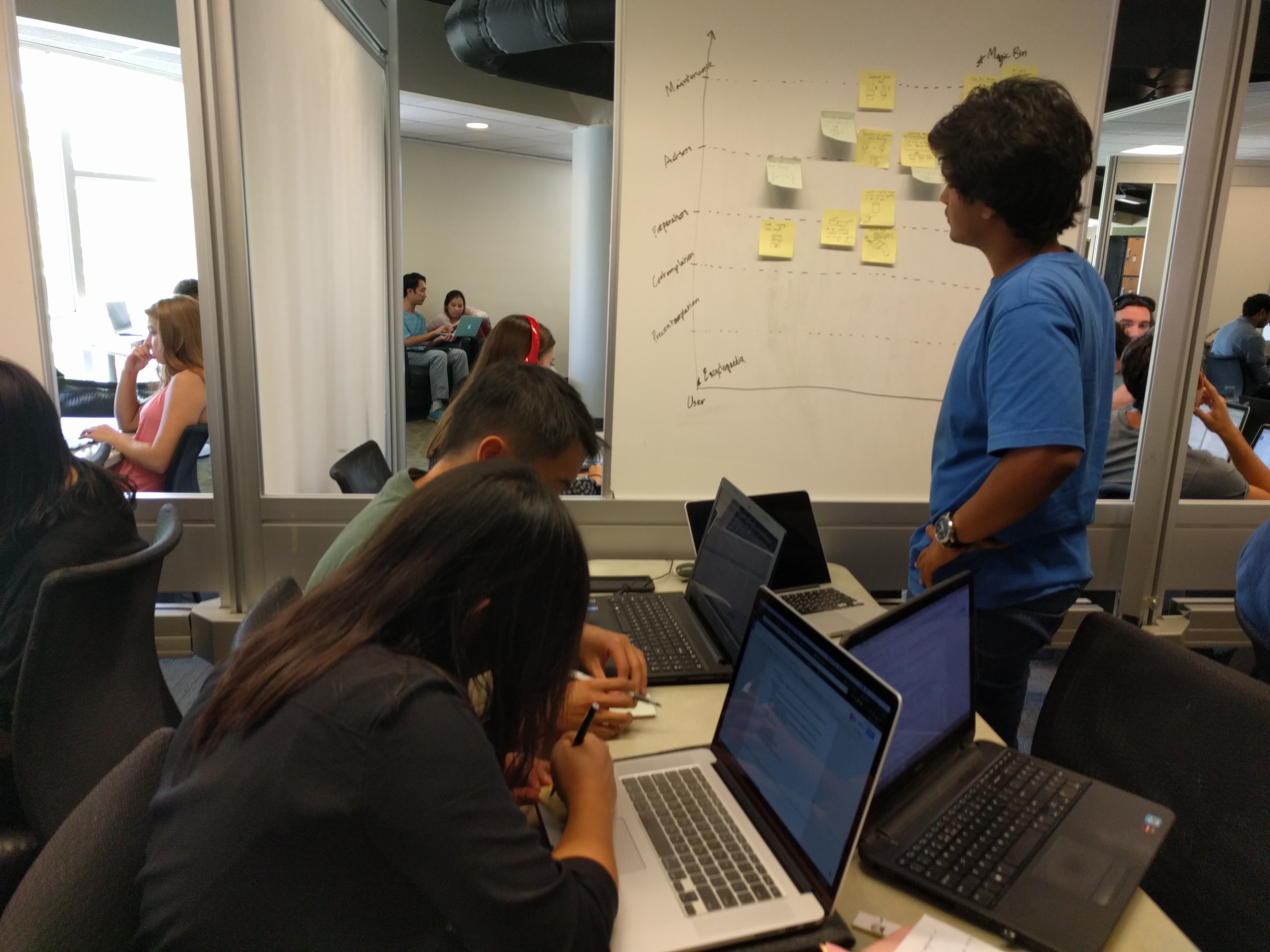
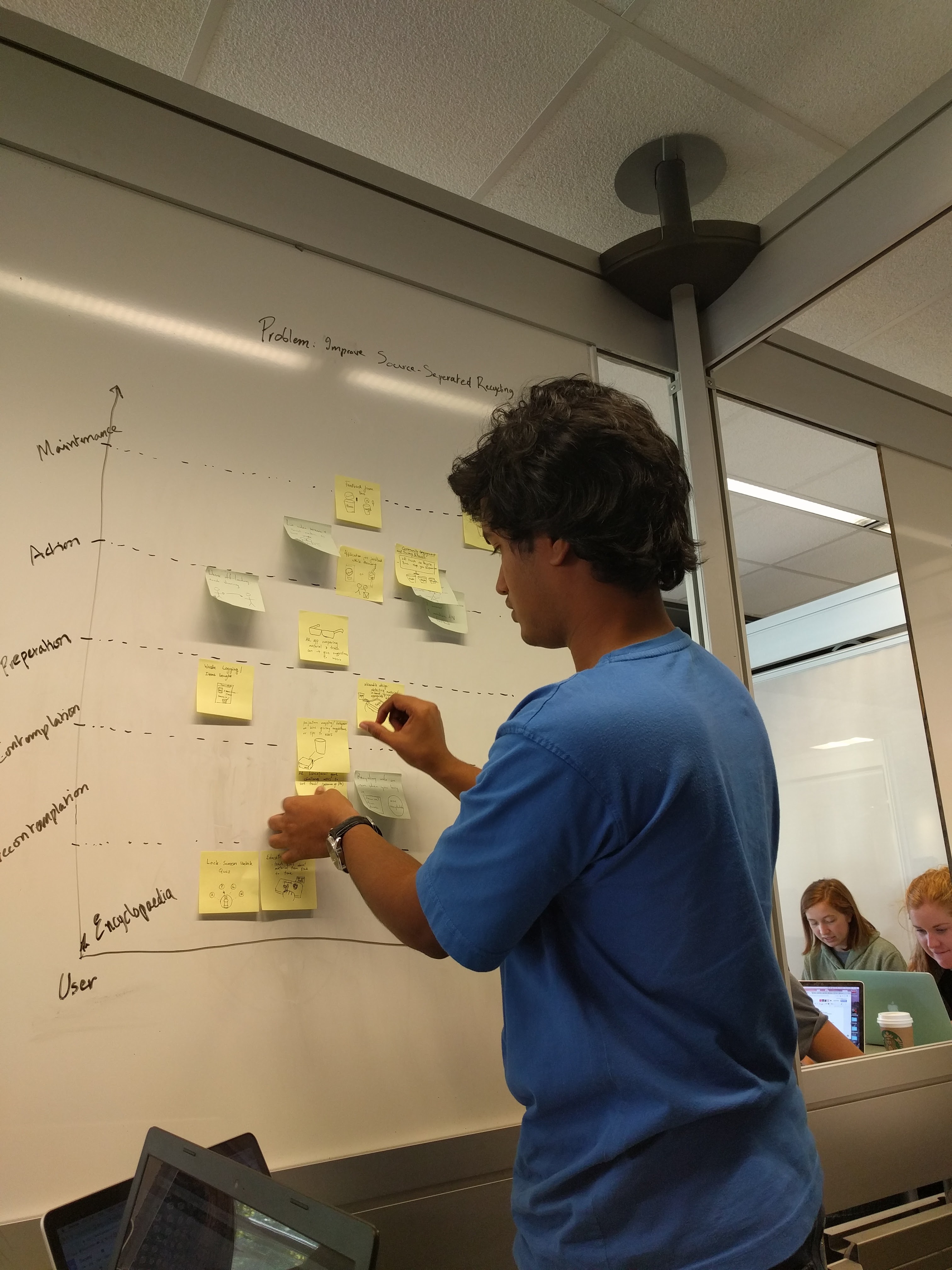
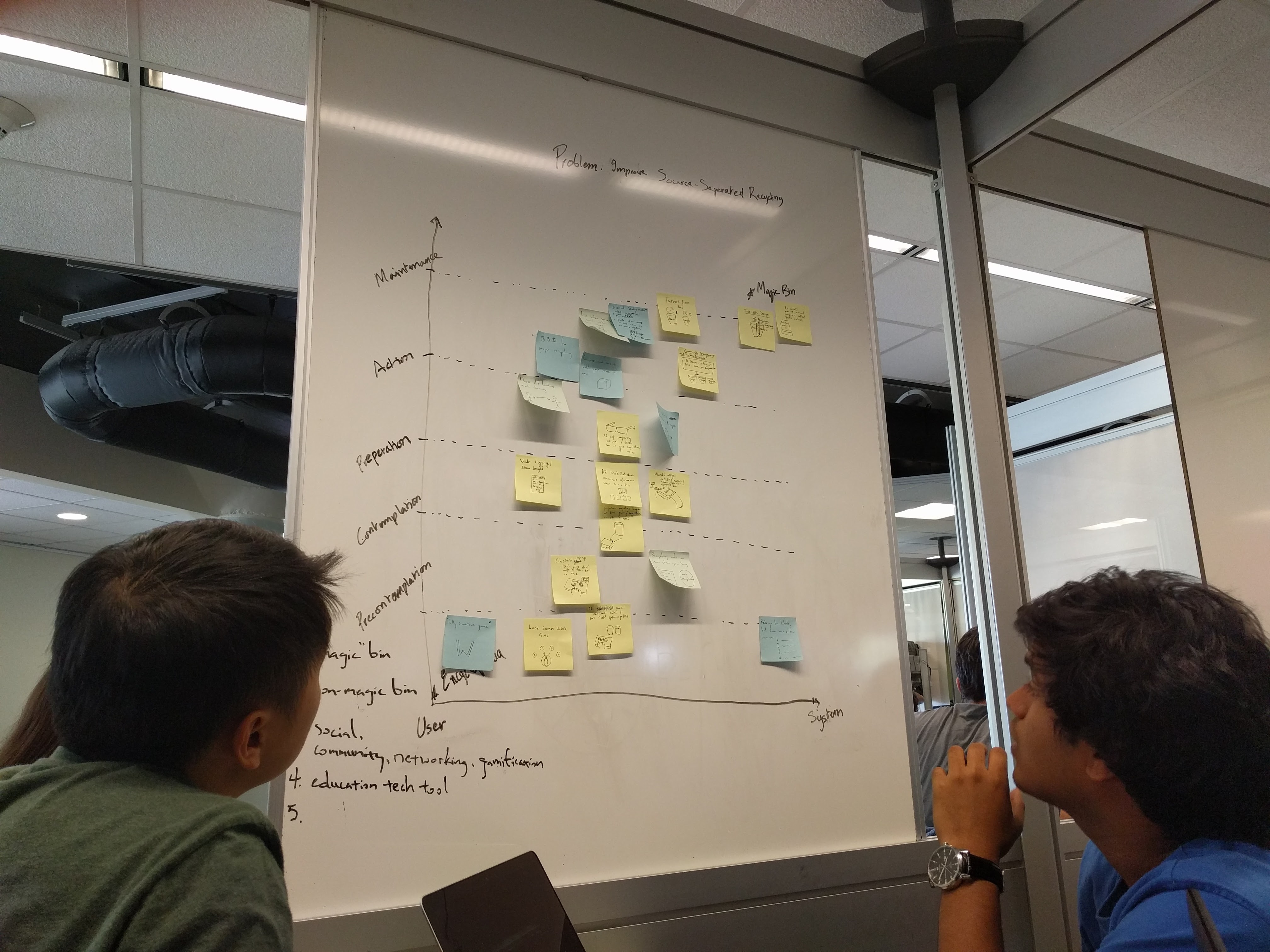
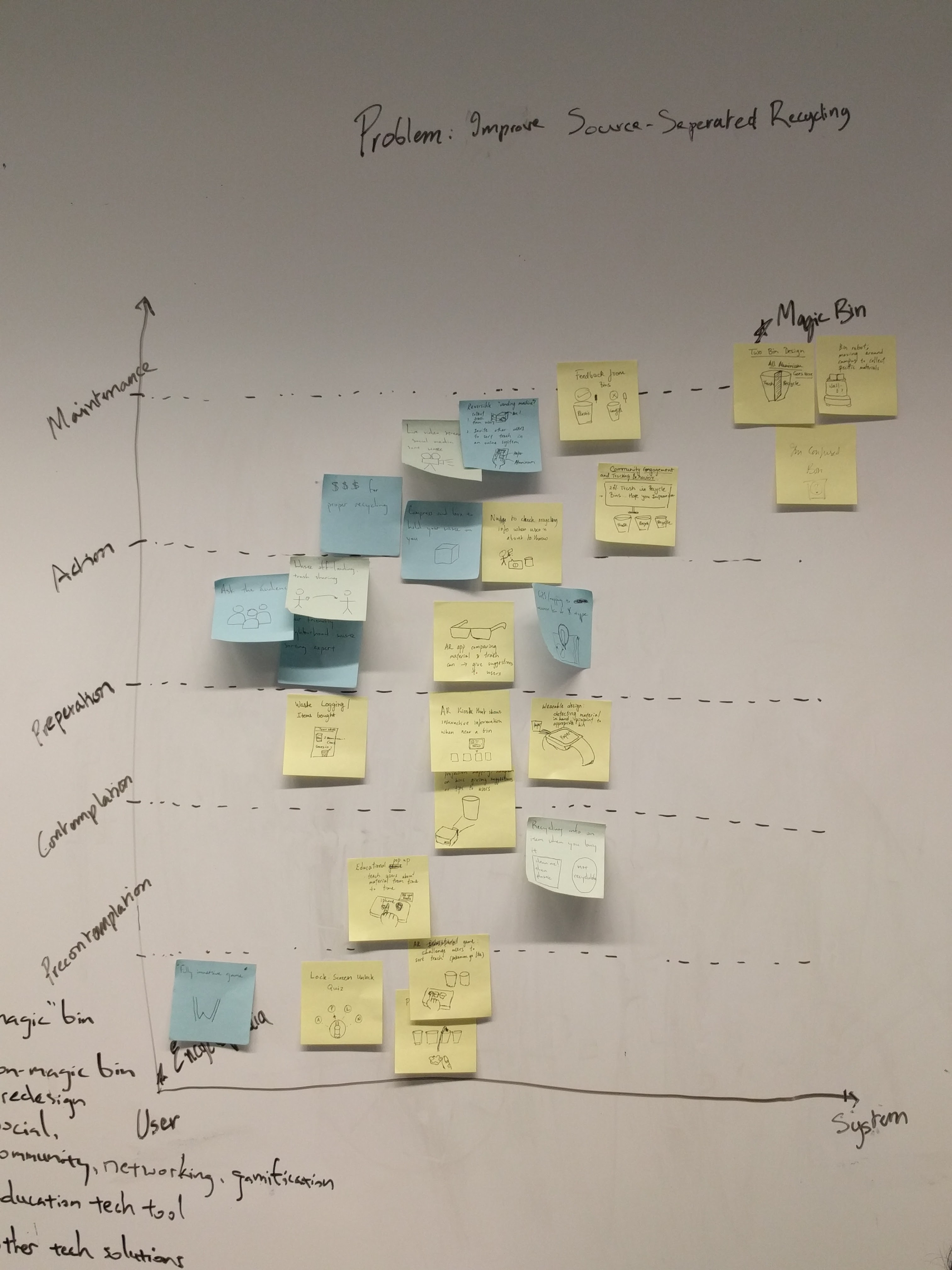
We made low-fidelity prototypes of each of these ideas to gain more constructive feedback about each of them and ultimately agreed to select the one idea that we felt was at the right intersection of effectiveness and feasibility.

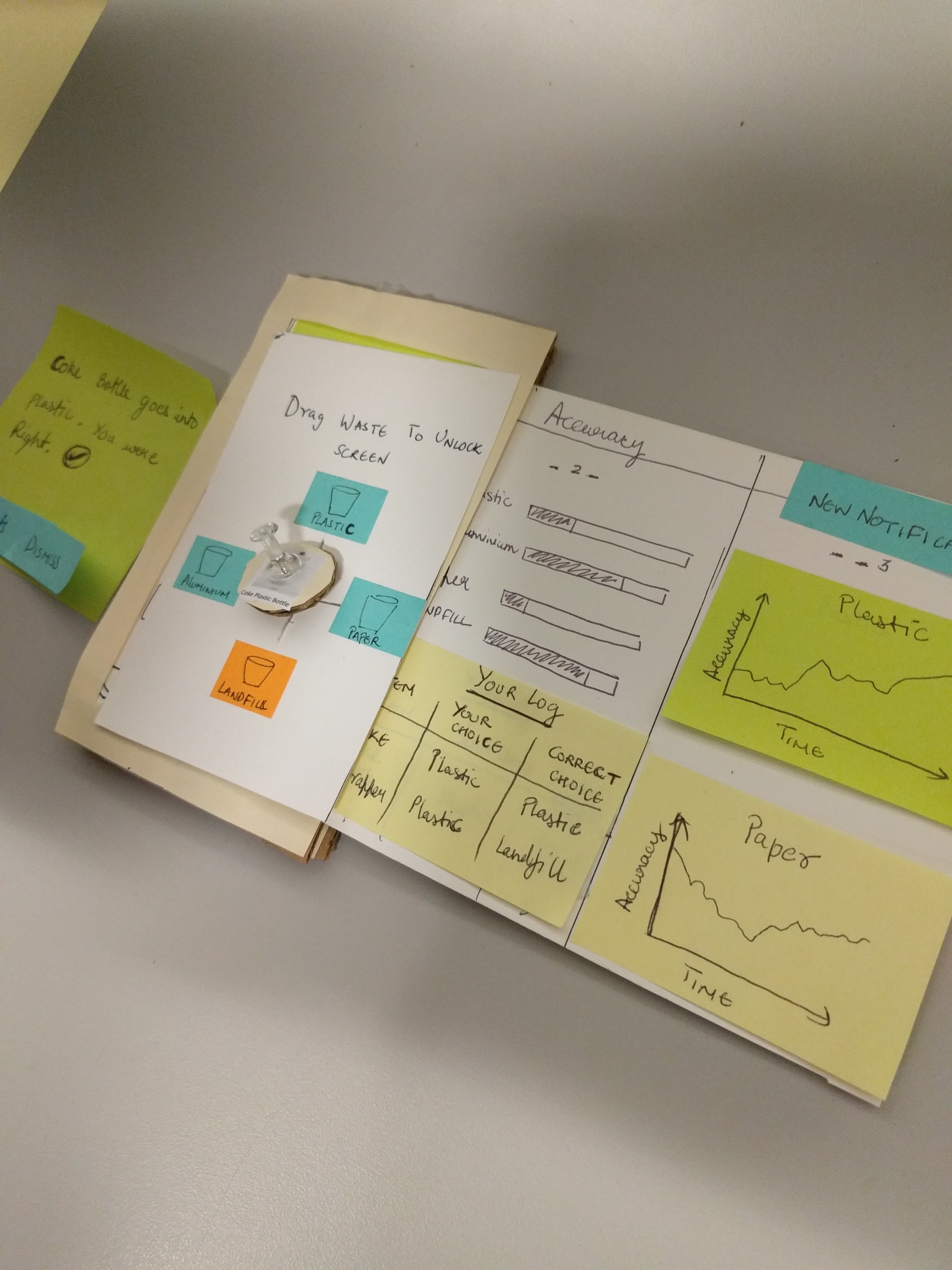

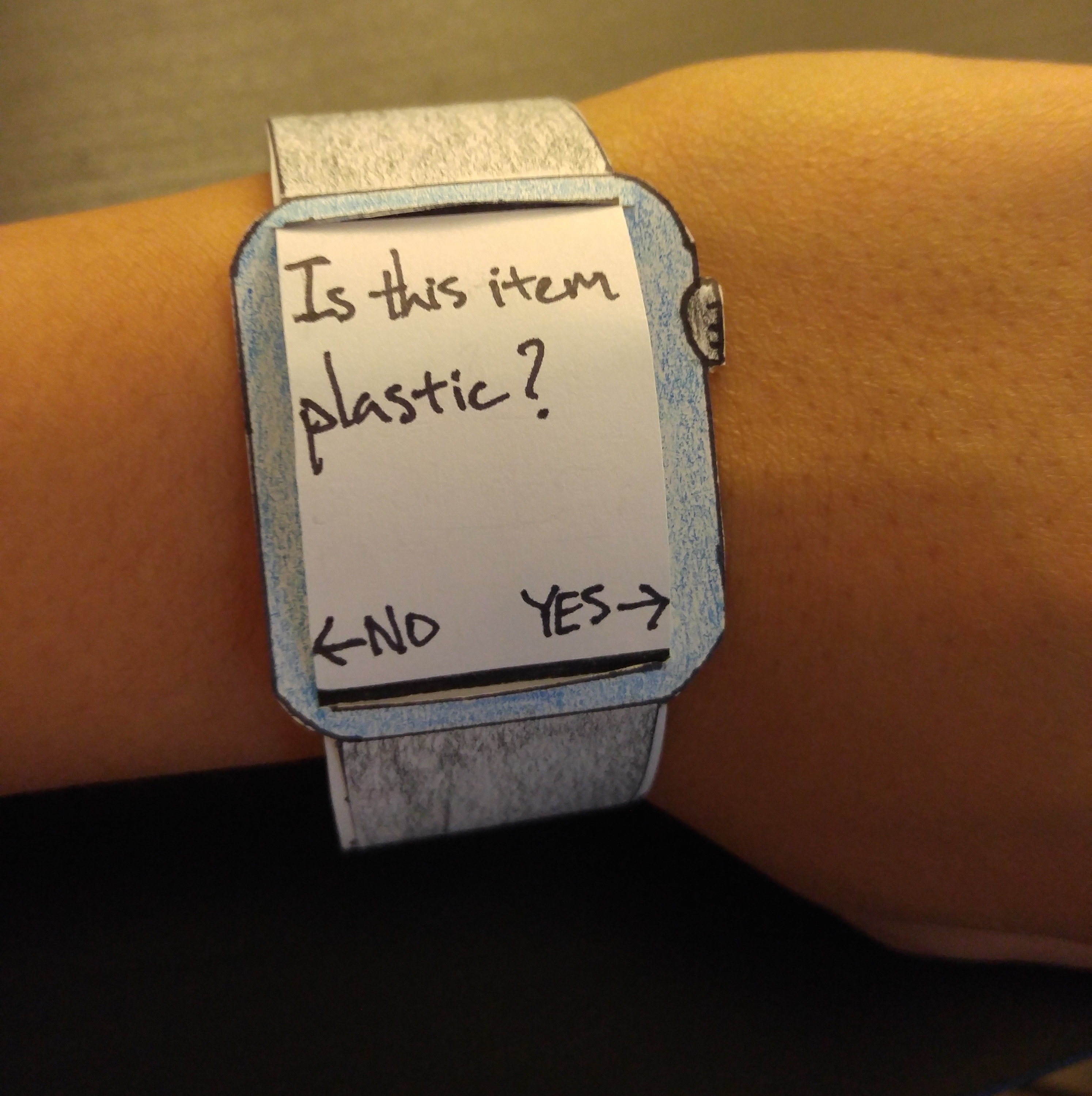

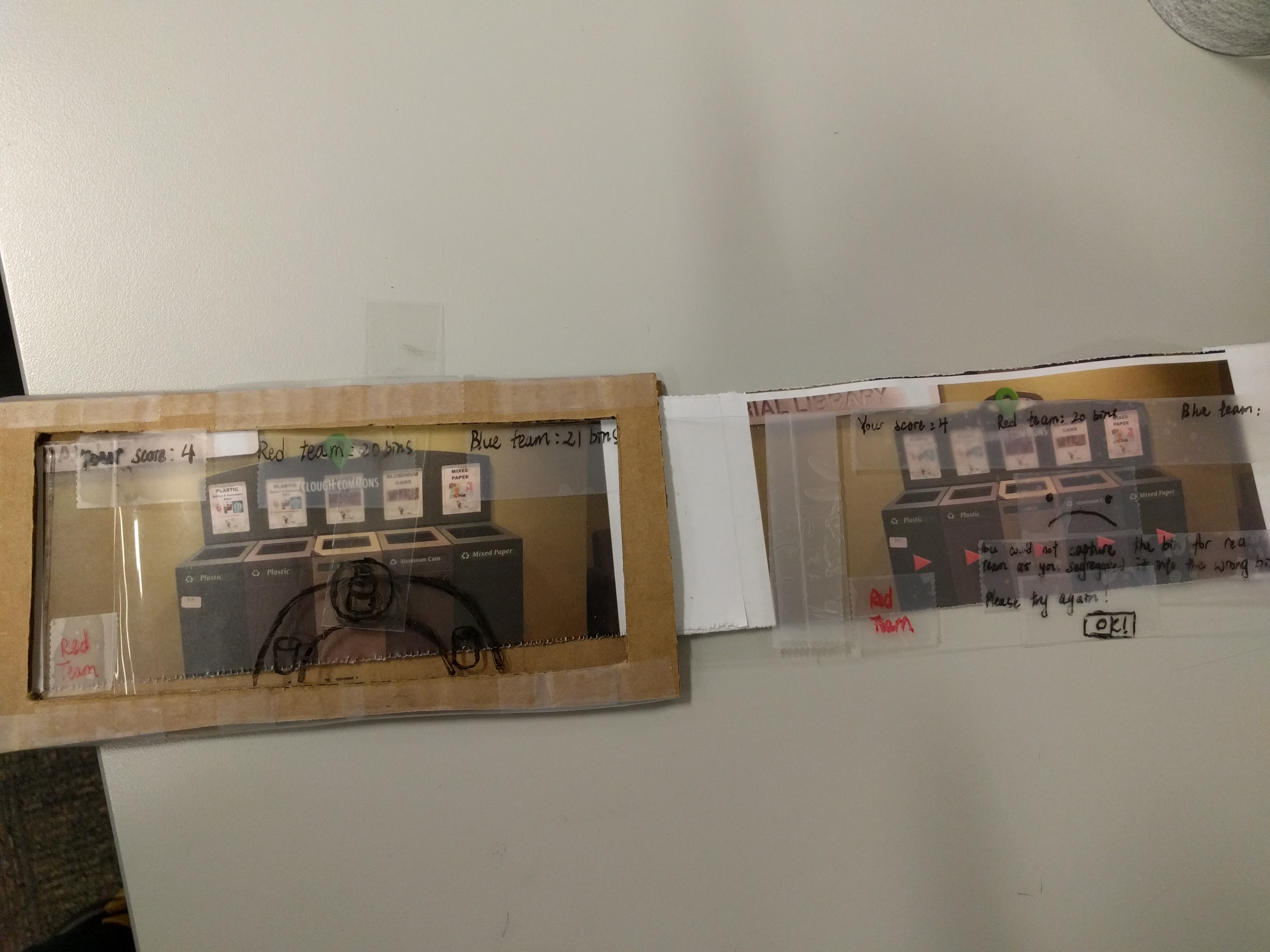

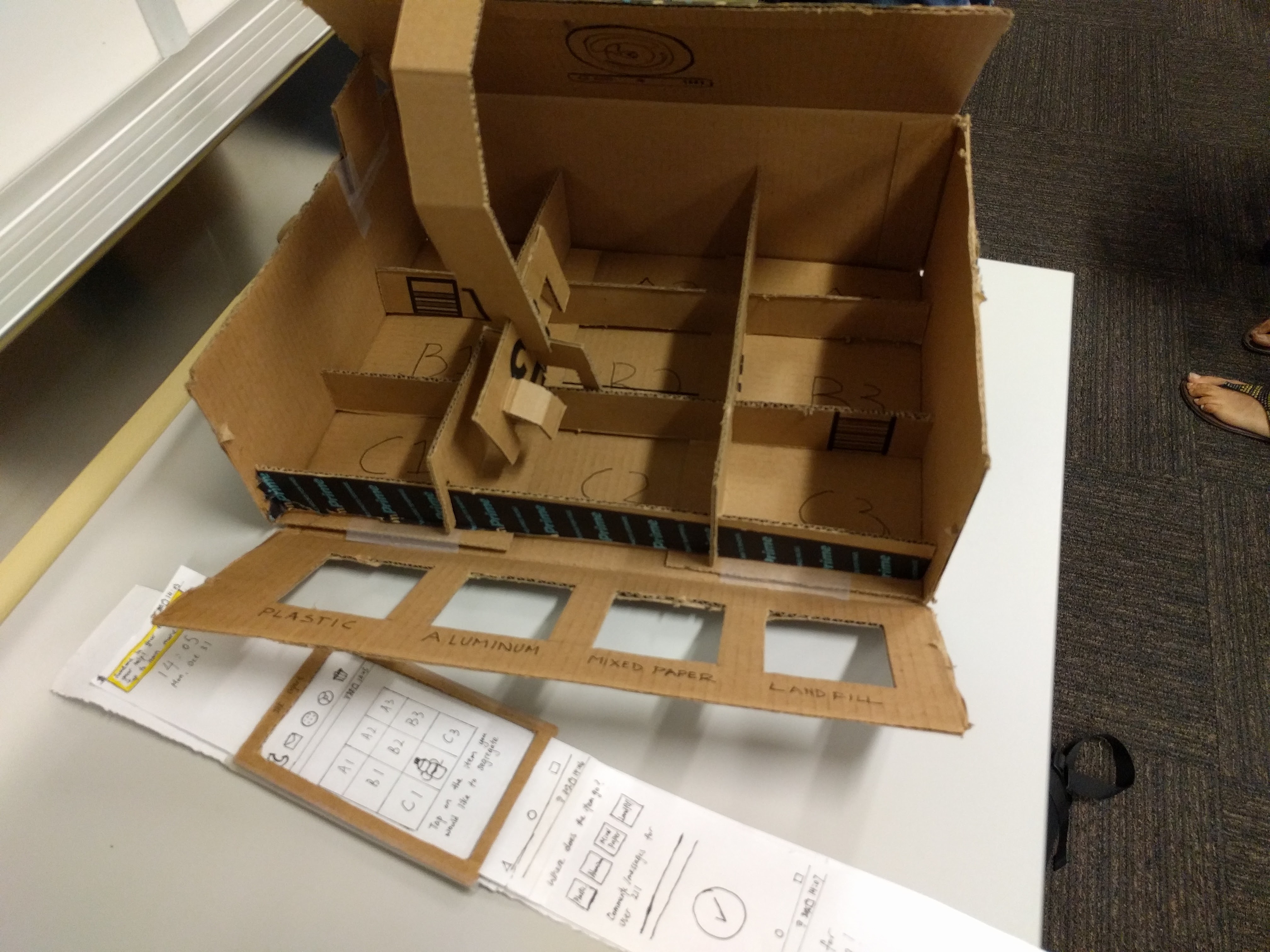
Ultimately, we narrowed down the Wearable Nudge Smartwatch App as our final idea. This was based on the fact that it was quick to build, elegant and was far more specific in measuring what we intended to define as our success metrics.
The Development
Considerations
Before we went onto deciding a functional prototype to build we needed to draw out certain design decisions that we'd need to adhere to while selecting a solution. These were:
The idea that best fit these criteria was that of the Wearable Nudge Smartwatch App.
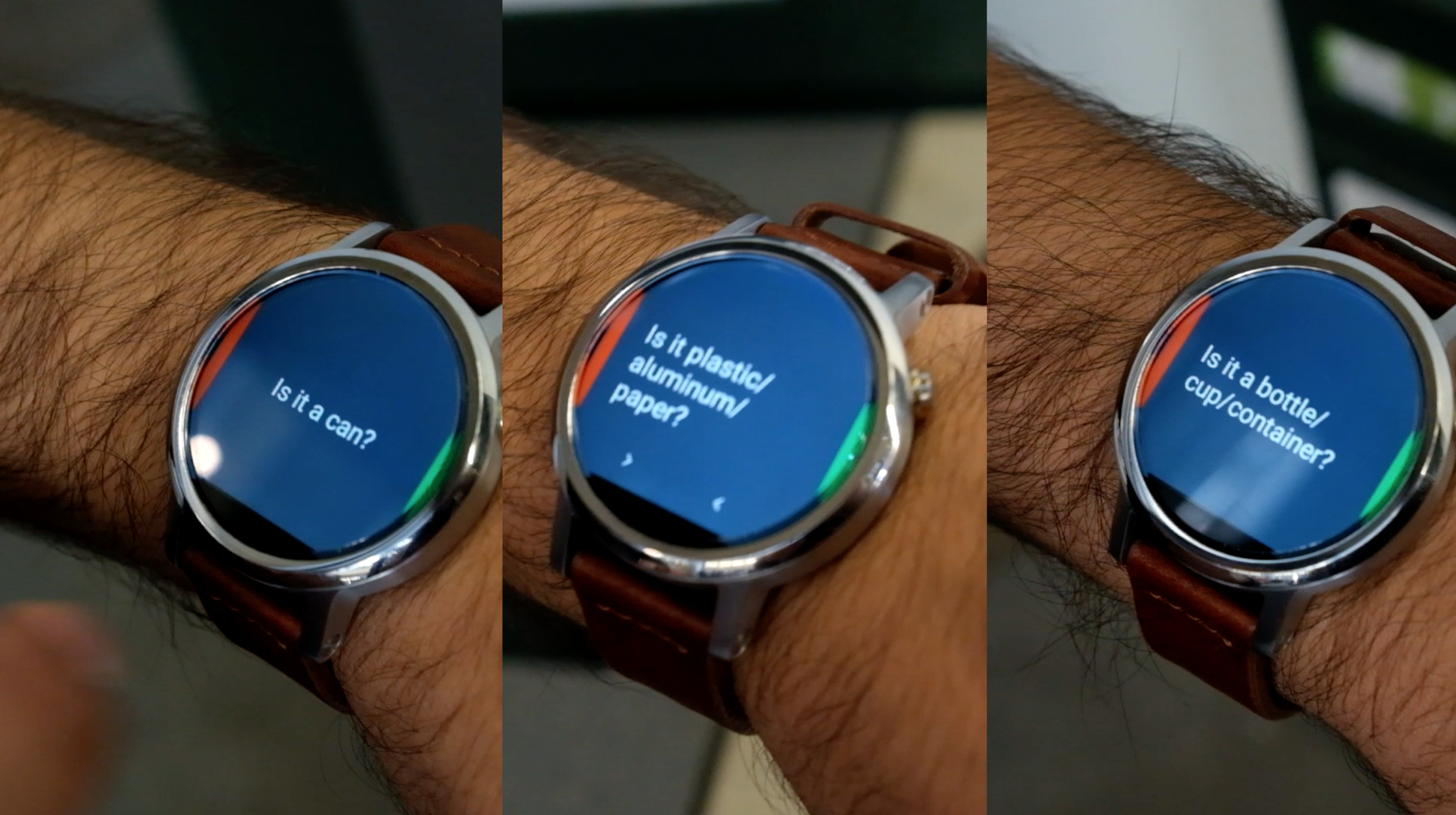
How it Works
- When a user approaches a recycling unit the proximity sensors detect which bin type they are closest to - where they are most likely to dispose off the item they possess
- Based on the bin they are closest to, a vibrating notification is fired on their smartwatch with an initial probe question about the item they possess
- The user can answer this question (and every subsequent one) with a simple yes or a no that can be selected by basic swipe actions
- prompted to throw the item they have in one of the bins or to try another

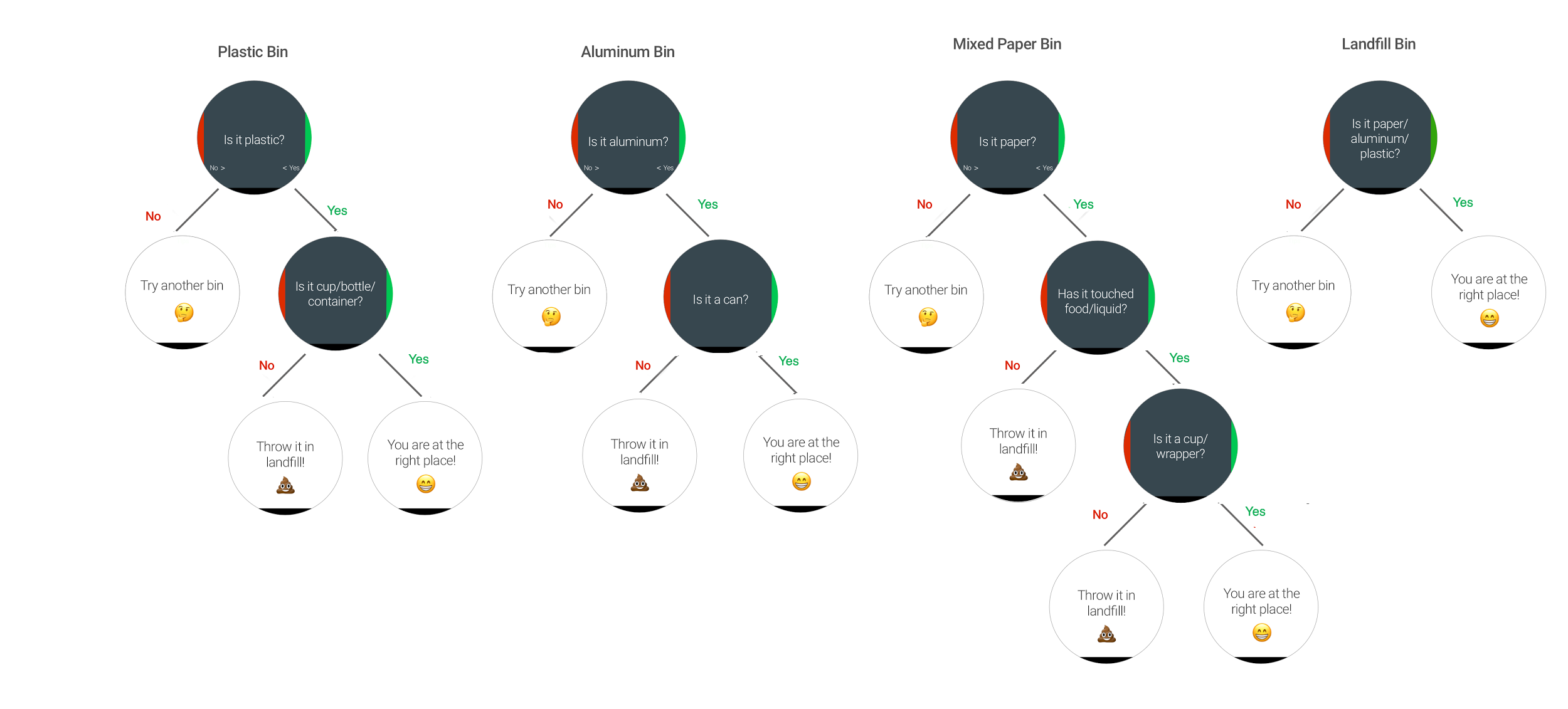
Final Build
We identified two main areas of development including the wearable app itself and proximity sensors to be installed on the bins to trigger reaction in the nudging app. Our initial plan was to develop the wearable app with Java and the proximity sensors with Arduino. However, due to the limited time frame given, we decided that sensing the proximity between user and bin and then triggering a signal to the user’s device can be replaced by a Wizard-of-oz technique. Therefore, we also developed an auxiliary wizard dashboard for a researcher to send signals and trigger a reaction on the wearable.
Before we began developing, we focused on refining the content. Our team paid another visit to the Office of Facilities Management to refine the content and the decision tree to be used in the wearable app that our users traverse through to segregate the waste correctly. We also used graphic design tools such as Sketch to create a quick preview of the UIs before diving into development.
Some of the specific decisions we took while building the device were:
The sensor-wearable architecture was complicated to construct given our time limitations. Thus we felt manually triggering a remote notification on the smartwatch when the user walks up to a bin can help us achieve the same effect.
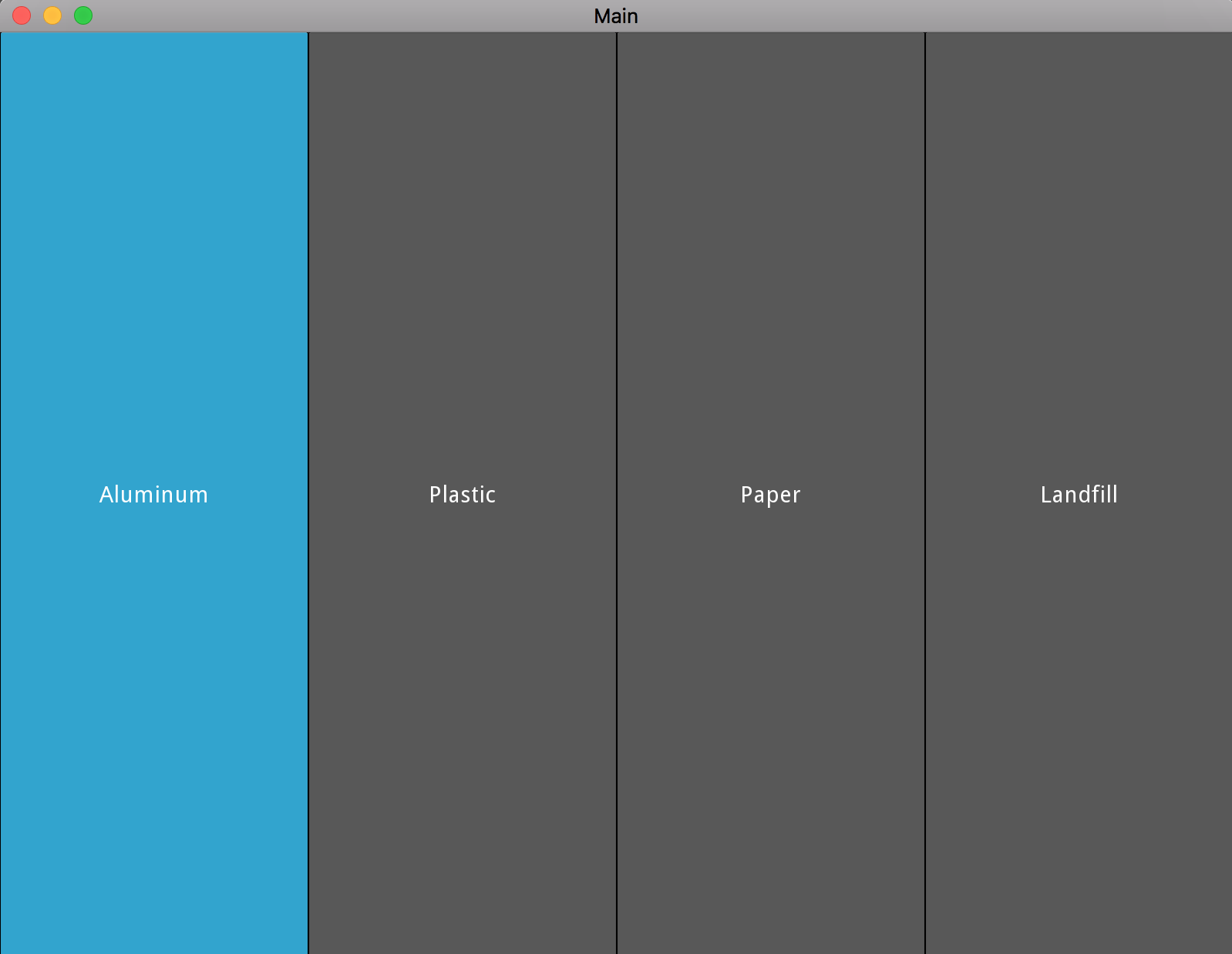
To ensure maximum convenience we wanted the user to complete the given task with maximum speed. In order to do this we kept a simple aesthetic with basic interactions to minimize distractions.

Every question asked should be short and to the point as well as easy to understand for the user. Moreover, the user shouldn't be asked too many questions.
The UI should clearly indicate to the user if they are being asked a probe question or if they are being prompted at an imperative point.

Our final prototype is also designed to help us measure 2 different success metrics. This is done by locally storing the users decisions for each question and how logging the timestamp since their initial probe and their final prompt.
Future
Proposed Study
Participants will take part in a single session where they interact with reco by completing a waste sorting task. The task involves sorting predetermined list of 15-20 sample waste items into a group of bins on Georgia Tech's campus. The list of waste items is designed to be representative of everyday household waste that may be generated by a student. To account for order effects, waste items will be presented in a random order.
For our first two research objectives, the following two hypotheses will be under consideration:
H1 (comparing accuracy) -
The overall accuracy of sorting waste will be significantly higher for the group using the reco compared to the controlled group.
H2 (comparing convenience using task time) -
The overall task time will not be significantly different between the two conditions.
The study will consist of 40 participants in a between-subjects design, recruited from among the students at Georgia Tech. The experimental group would be performing the task equipped with reco while the control group performs the task as they would in everyday life.
From the findings of this study we hope to understand how well reco really does what it set out to do. And from there we can learn how to hone it into a real scaleable and more accessible solution for the future.